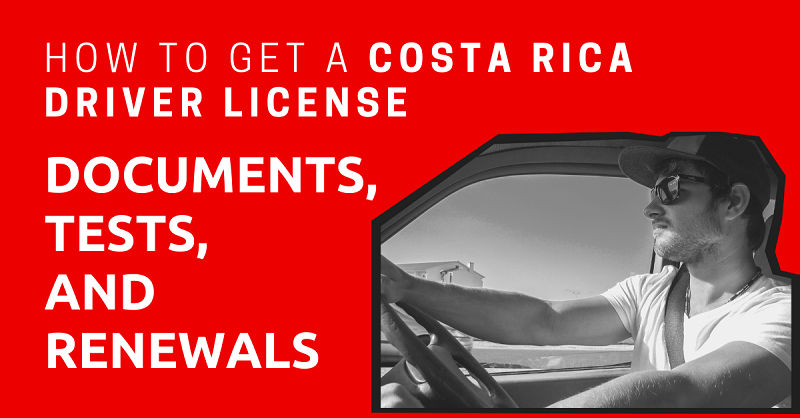
To legally drive in Costa Rica for a long time, you need a Costa Rican driver’s license.
This article will show you how to get a Costa Rican license using your driver’s license from back home.
Many expats in Costa Rica do this because it means they don’t have to take the written and driving tests.
We’ll also talk about how to apply if you’ve never had a driver’s license before.
This article will take approximately 16 minutes to read. Don't have the time right now? No worries. You can email the ad-free version of the article to yourself and read it later!
Disclaimer: This article may include links to products or services offered by ExpatDen’s partners, which give us commissions when you click on them. Although this may influence how they appear in the text, we only recommend solutions that we would use in your situation. Read more in our Advertising Disclosure.
Contents
- Key Takeaways
- Requirements
- Where to Apply for a Driver License in Costa Rica?
- Getting Costa Rica’s Driver License through Homologation
- Getting a Motorcycle License
- What If I Don’t Have a Driver’s License from My Home Country?
- Renewing Your Costa Rican Driver’s License
- Driver’s License Service
- Driving with a Tourist Visa
Key Takeaways
- Only temporary residents, permanent residents, and Costa Rican citizens can apply for a Costa Rican driver’s license.
- If you have a license from your home country, you can undergo the homologation process to get a Costa Rican driver’s license without having to take a practical driving test and written test.
- If you don’t have a license from your home country, you need to take a practical driving test and a written test in Spanish.
- The whole process can be straightforward as long as you have the right paperwork.
- Making an appointment can be challenging. It’s recommended to do it as soon as you can.
- If you need assistance, you can hire an agent to help you through the process.
Requirements
Only residents (temporary and permanent) and citizens who are older than 18 years old can apply for a Costa Rican driver’s license.
So, once you have gone through the process of becoming a resident, you can start applying for a Costa Rican driver’s license or homologate your foreign driver’s license.
To homologate means you are allowed to use your driver’s license from your home country to obtain a Costa Rican driver’s license without taking the driving test.
Of course, you must receive approval from the Dirección General de Educación Vial.
That approval process is explained in the following sections.
Remember, you are not able to drive legally until you have your driver’s license, so getting it as soon as possible after your move to Costa Rica is important.
Where to Apply for a Driver License in Costa Rica?
As you go through the driving license application process, you’ll need to go to the Council for Road Safety (COSEVI).
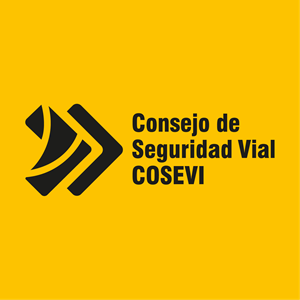
There are numerous COSEVI locations around the country, and the Council encourages people to apply through these regional sites rather than in the central office in the La Uruca neighborhood in San Jose.
The La Uruca office has long lines, while the regional sites usually do not.
COSEVI offices are located in Alajuela, Cartago, Guapiles, Heredia, Liberia, Limon, Nicoya, Perez Zeledon, Rio Claro, Puntarenas, San Carlos, and San Ramon.
Getting Costa Rica’s Driver License through Homologation
To start the homologation process, you must have remained in Costa Rica for a period greater than 3 months and 1 day consecutively, starting from your last entry into the country.
This is very important: if you try to process the homologation before 91 days have passed since your last entry into the country, you will be told to come back after 91 days.
Once you finish the homologation process, you can now get the license at Banco de Costa Rica bank.
Let’s take a look at how to do it step-by-step.
Make an Appointment
You can start your step by making an online appointment through the Dirección General de Educación Vial website.
Since the site is in Spanish, you might want to translate it into English in your web browser so you can understand what kind of information is required. You should be able to fill it out in English.
However, it is reported that you can sometimes only fill it out in Spanish. Here is a photo of the form, followed by some hints if you fill it out in Spanish.
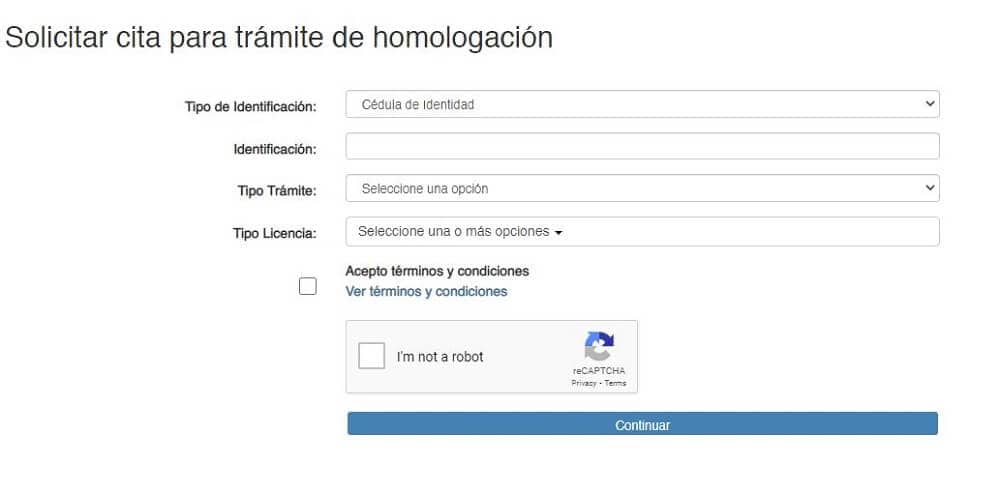
- Fill in the form completely.
- Tipo de Identificacion (ID Type): Immigration document
- Identificacion (ID): Put in your DIMEX card number
- Tipo Tramite (Procedure Type): Foreign License Approval Appointment
- Tipo Licencia (License Type): B1 (regular lightweight vehicle). If you want a motorcycle license also, talk with them at your appointment at Banco de Costa Rica
- Acepto terminos y condiciones (Accept terms and conditions).
- Click “I am not a robot.”
- Continuar (Continue)
After that, you will be taken to a page where you can choose the regional office for your appointment. Select the location, and you can select the appointment date and time.
This cannot be changed once you accept it. You have about 5 minutes to make your appointment selection.
Once your appointment is confirmed, download the PDF confirmation for future reference.
Prepare Paperwork
Once you have an appointment, make sure you have all the required documents prepared and ready before the appointment:
- Your passport as well as a photocopy of your passport information page and the latest entry stamp into Costa Rica.
- Your DIMEX card (Costa Rica national identity card)
- Your original driver’s license from your home country, a photocopy of both sides of your license, and the official translation of the license in Spanish.
- Medical certificate (dictamen medico)
- The certification of exits and entries from Immigration.
Let’s take a look at each piece of paperwork you need in detail.
Passport and DIMEX Card
You need to show both your passport and your DIMEX card as proof that you are a resident of Costa Rica.
They need to be valid and in good condition.
Driver’s License from Your Home Country
The driver’s license from your home country must be valid and in good condition.
If the driver’s license is not in Spanish, you must get it translated into Spanish by an official translator, such as https://www.traductoroficialpublico.com/en/.
Usually, you can scan your driver’s license and passport, send them to the translator by email, pay online, and receive the translated documents with the stamp and receipt a few days later.
Costs are reported to be in the range of US$25-40.
If your driver’s license is from a different country than your nationality of origin or birth, you will need to prove your legal stay in the country where you obtained the license.
This can usually be satisfied by presenting a legal residency card, work permit, refugee card, social security card, or passport from the country.
Medical Certificate
To get the medical certificate, you have a few options.
You can go to a local clinic and ask for a medical certificate for a driver’s license, or you can find a doctor around the COSEVI offices who will do the medical examination on-site. Or you can visit a hospital.
The doctor will first ask basic questions about your health. Then, your vital signs will be taken, your vision will be checked, and your reflexes will be tested.
All of this information will be entered digitally by the doctor.
When finished, you will be given a reference number for your medical information.
Keep that information for your appointment.
The medical exam process will take about 20 minutes, and the cost is about US$40. The medical certificate is valid for 180 days.
Certification of Exits and Entries
COSEVI now requires foreign applicants to get the Certification of Exits and Entries from the Immigration Department.
Here’s what you need to do:
- You must make the request through the website: www.migracion.go.cr
- When completed, submit the form. You will receive an application receipt number.
- Make two payments (US$1.41 and 15 colones) at any branch of the Bank of Costa Rica into account #CR86015201001025489683. Ask the teller to make sure your name is on the deposit receipt.
- Send an email to [email protected], attaching or stating the application receipt number and the image of the payment receipt of US$1.41 plus ₡15 colones paid into account: CR86015201001025489683.
- The Certification of Exits and Entries will be sent to you via email.
- The Certification request can only be processed by email, and the certification will be sent to you by email within a period of no more than five days.
Please note that even if you apply for the Certificate of Exits and Entries together with your husband or wife, both of you still must go through this process individually.
Finish Homologation
Once you have all the paperwork, visit COSEVI at the scheduled time.
You will need to show the appointment documentation to the guard. He will instruct you where to go to complete your homologation process.
Getting the License
Once you have finished the homologation process at one of the COSEVI offices, you can get the driver’s license at Banco de Costa Rica bank.
There are two steps involved: making an appointment and visiting the bank.
How to Make an Appointment with Banco de Costa Rica
You will need to make an appointment online at the Banco de Costa Rica website.
It is advised to make an appointment right after your COSEVI appointment to make sure you can get an appointment at a Banco de Costa Rica branch near you.
Please note that sometimes the Banco de Costa Rica website does not work on certain browsers. It has worked at times for me, and at other times, it has not.
I have found, however, that it has always worked on my phone browser. Try a few times on your computer first.
If you are not an English speaker, translate the browser page into English and follow the instructions.
If it does not allow you to complete the form in English, here are the categories and what to select if the page is in Spanish.
- Click Ver detalle under Cita para Licencia
- Click Solicite Aqui su cita
- Seleccione el servicio: Citas Licencias/Pasaportes
- Seleccione el Topico: Licencias Residentes
- Identificacion (your DIMEX ID number)
- Seleccione el Tramite: Licencia por Homologacion
- Seleccione una provincia: Choose the province where you live.
- Seleccione una sucursal: Select your bank location where you want the appointment.
Once it’s done, you will receive a confirmation of the appointment with an appointment time.
Visit Banco de Costa Rica
On the day of the appointment, present yourself at the bank a bit earlier than the appointment time. Tell the guard you are there for a driver’s license appointment (so you don’t have to wait in other lines). He will direct you to wait in a particular area.
When it is your turn, they will call your name.
At that time, you will need to present your DIMEX card, sign for your license, have your photo taken, and pay the license fee (at the time of publication, 6,000 colones (about US$12)).
You will be handed your license, which is good for two years. After that, you can keep renewing it indefinitely.
Congratulations – you are an official Costa Rican driver.
Getting a Motorcycle License
Remember, if you want a motorcycle license as well, you need to tell the person at the bank so they can issue you a motorcycle license also.
In Costa Rica, you receive two different driver’s licenses – one for driving a car and one for driving a motorcycle.
This is in contrast to the U.S. system where you simply receive a motorcycle endorsement on your driver’s license.
What If I Don’t Have a Driver’s License from My Home Country?
If you do not have a driver’s license from your home country, or if you have one that’s already expired, then you will need to complete a written examination and undergo a driving test.
Both will be in Spanish only.
The written test is formatted similarly to that of the U.S. test and consists of 25 multiple-choice questions covering driver knowledge and theory.
To prepare for the written or driving test, you can visit the COSEVI office nearest to you and get reference materials that you can use to study.
For the driving test, speak with the folks at the COSEVI office. You will be given a schedule for which you are advised to arrive early.
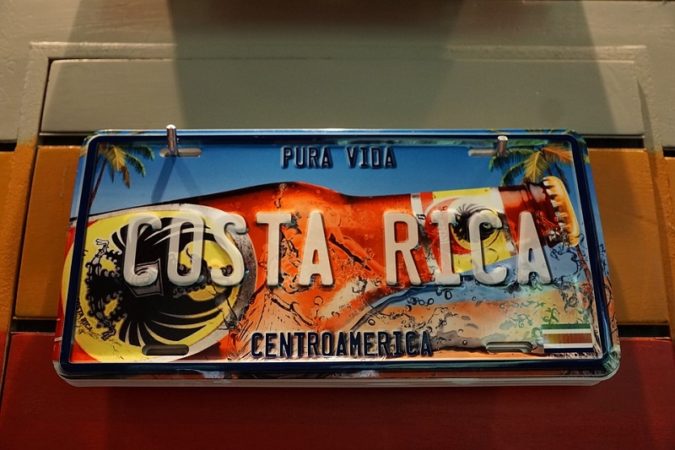
On testing day, you will first be asked to demonstrate the arm signals for left and right turns and stop.
After you have satisfactorily demonstrated these, you will head out for the road test, which takes approximately 1-2 hours.
You will be asked to choose between an automatic and manual transmission.
You will know the results of the driving test immediately following the test.
Renewing Your Costa Rican Driver’s License
This process is not complicated.
The renewal is done through Banco de Costa Rica. The most important thing is to begin making an appointment at a branch of Banco de Costa Rica.
You can do it 3 months in advance before your driver’s license expires.
In some areas of the country, it is more challenging to get an appointment because there are fewer bank branches. So, it is wise to begin looking early.
You can visit the Banco de Costa Rica website to make your appointment.
Once you have the appointment secured, follow these steps:
- Get your “dictamen medico” (medical certificate). The doctor will enter your information digitally and provide you with an online reference number. Take a copy of the email confirmation with you to your appointment.
- Pay any outstanding traffic fines. You can do this by presenting your license at the bank teller, and they will have a record of what you owe.
- Attend your scheduled appointment with your current license and the medical certificate. You can pay the license fee (about US$14) at the bank either in cash or from an account at Banco de Costa Rica. You will have your photo taken and will receive your license immediately.
Driver’s License Service
There are businesses that specialize in helping foreigners get their driver’s licenses. I used such a service in Puntarenas and found it to be very valuable. The cost was 85,000 colones (about US$168).
The agent took me through each of the steps below, helped me make all the appointments necessary, translated my documents, secured my medical examination (through questions only), and prepared a packet of documents for our COSEVI appointment.
Even though my agent doesn’t speak a lot of English and will use a translator for some of her communication, I still recommend the service.
Going through the steps below is completely possible for a non-Spanish-speaking resident, but it will be challenging, and you may encounter delays because of minor details missed due to language barriers.
To find businesses that help you process your license and appointments, search online or ask other foreigners in your area who have used a service.
I found my agent by posting in a local WhatsApp chat group to see if there was anyone who could help with the license process.
In Puntarenas, my agent is Edith Arce. She can be contacted on WhatsApp at +506-7020-9608.
Driving with a Tourist Visa
If you are present in Costa Rica on a tourist visa, you can drive legally using your license from your home country for 90 days.
Costa Rican Immigration recently changed the tourist visa limit from 90 days to 180 days.
However, the law regulating the time that a tourist can legally drive in the country has not yet been changed to 180 days. So, be aware that while you are allowed to be in the country for 180 days, you can only drive legally for 90.
At this point, that means you would need to leave the country at the 90-day point and return in order to drive another 90 days.
A trip to the Nicaraguan border is probably the easiest solution. From San Jose and many parts of the country, that can be accomplished in one day.
You can drive there, park your car, cross the border on foot, and cross back into Costa Rica the same day. Many, however, hire a shuttle to take them there and back.
Please note that as a tourist, you must always have your home country license as well as your passport with you while driving in Costa Rica.


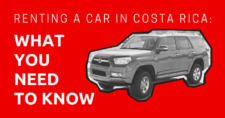
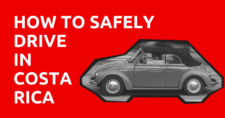
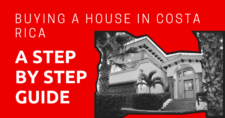
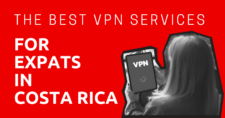
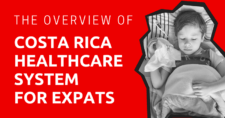
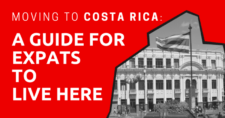
Can anyone tell me if foreigers have to go to cosevi for renewal or can we go to BCR